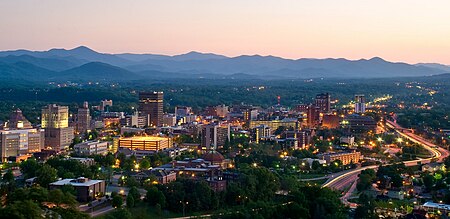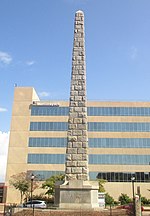Asheville, North Carolina
Asheville, North CarolinaCities in Buncombe County, North CarolinaCities in North CarolinaNorth Carolina populated places on the French Broad RiverPages with non-numeric formatnum arguments ... and 4 more
Populated places established in 1784Use American English from March 2021Use mdy dates from March 2021Western North Carolina

Asheville ( ASH-vil) is a city in, and the county seat of, Buncombe County, North Carolina, United States. Located at the confluence of the French Broad and Swannanoa rivers, it is the largest city in Western North Carolina, and the state's 11th-most-populous city. According to the 2020 census, the city's population was 94,589, up from 83,393 in the 2010 census. It is the principal city in the three-county Asheville metropolitan area, which had a population of 469,015 in 2020.
Excerpt from the Wikipedia article Asheville, North Carolina (License: CC BY-SA 3.0, Authors, Images).Asheville, North Carolina
Broadway Street, Asheville
Geographical coordinates (GPS) Address Phone number Website Nearby Places Show on map
Geographical coordinates (GPS)
| Latitude | Longitude |
|---|---|
| N 35.595555555556 ° | E -82.551944444444 ° |
Address
The Green Sage Coffeehouse & Cafe
Broadway Street 5
28802 Asheville
North Carolina, United States
Open on Google Maps









